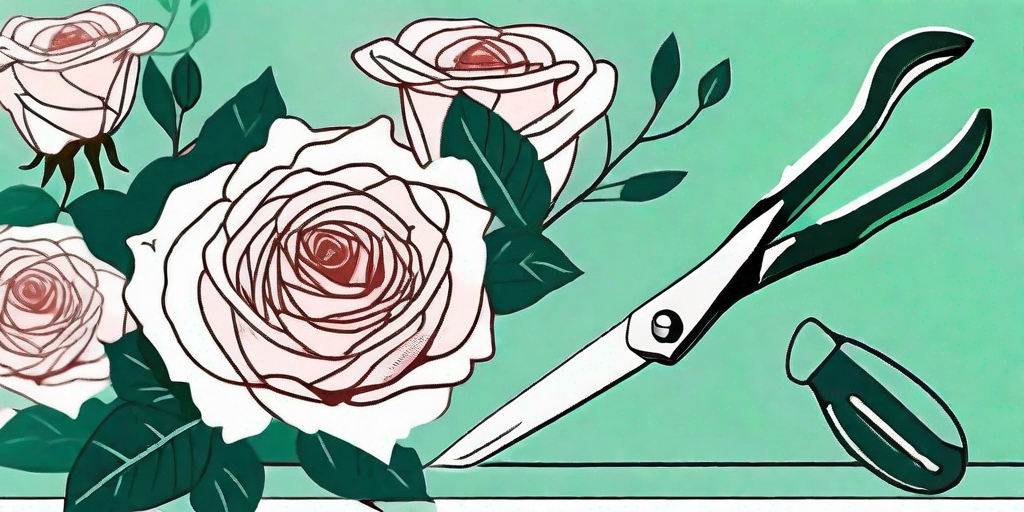
Roses are red, violets are blue, but let's be honest, it's the rose that has captured your heart, isn't it? There's something about that prickly beauty that has you entranced. But how do you keep your rose hedge blooming beautifully? Well, you're in luck because we're about to embark on a thorny journey of rose hedge care.
The Basics of Rose Hedge Care
Before we dive into the nitty-gritty, let's cover the basics. Roses are a bit like the divas of the plant world. They need a bit of pampering to keep them looking their best. But don't worry, they're worth every bit of effort.
Firstly, roses love the sun. They need at least six hours of sunlight each day. So, if your garden is more like a vampire's lair, you might want to reconsider your choice of plant. Secondly, roses need well-drained soil. They're not fans of wet feet. Lastly, roses need a bit of room to breathe. Overcrowding can lead to disease and a less than blooming beautiful hedge.
Choosing the Right Rose
Not all roses are created equal. Some are more suitable for hedges than others. When choosing your rose, consider its growth habit, disease resistance, and of course, its beauty. After all, you're going to be looking at it a lot.
Some popular choices for hedges include the Rugosa Rose, with its rugged charm and disease resistance, and the Knock Out Rose, known for its continuous bloom and easy care. But feel free to choose whatever tickles your fancy. Just remember to do your research first.
Planting Your Rose Hedge
Now that you've chosen your rose, it's time to get planting. The best time to plant is in the spring or fall. Dig a hole that's wide and deep enough for the roots, place your rose in the hole, backfill with soil, and voila! You've planted a rose. Just remember to water it well and give it a good mulch to keep those pesky weeds at bay.
When planting your hedge, space your roses about 2-3 feet apart. This gives them enough room to grow and reduces the risk of disease. And remember, patience is a virtue. It might take a few years for your hedge to reach its full glory, but trust us, it's worth the wait.
Maintaining Your Rose Hedge
Now that you've got your hedge planted, it's time to keep it looking its best. This involves regular watering, feeding, pruning, and disease control. Sounds like a lot of work, but don't worry, we've got you covered.
Watering your roses is a bit of a Goldilocks situation. Too little and they'll wilt, too much and they'll drown. The key is to keep the soil moist but not waterlogged. A good rule of thumb is to water deeply once a week, but adjust as necessary depending on the weather.
Feeding Your Roses
Roses are hungry plants. They need regular feeding to keep them blooming beautifully. A balanced rose fertilizer is a good choice, but you can also use organic matter like compost or manure. Just remember to follow the instructions on the packet. Overfeeding can be just as bad as underfeeding.
Feed your roses in the spring when they start to leaf out, and again in mid-summer to give them a boost for their fall bloom. But don't feed them late in the season. This can lead to new growth that's vulnerable to winter damage.
Pruning Your Roses
Pruning your roses keeps them healthy and encourages more blooms. The best time to prune is in the early spring, just before the buds start to swell. Use sharp, clean pruners to avoid damaging the plant and spreading disease.
When pruning, remove dead or diseased wood, thin out crowded branches, and cut back the remaining branches to about a third of their length. Don't be afraid to get in there and give your roses a good haircut. They'll thank you for it with a bounty of blooms.
Controlling Diseases and Pests
Roses can be prone to a number of diseases and pests, including blackspot, powdery mildew, and aphids. Regular inspection and early intervention are key to keeping these problems in check.
If you notice any signs of disease or pests, treat them promptly with an appropriate product. And remember, prevention is better than cure. Keeping your roses healthy and stress-free is the best defense against disease and pests.
FAQs
- How often should I water my rose hedge?
- Generally, you should aim to water your roses deeply once a week. However, this can vary depending on the weather and the specific needs of your roses.
- What type of fertilizer should I use for my roses?
- A balanced rose fertilizer is a good choice. You can also use organic matter like compost or manure. Just remember to follow the instructions on the packet.
- When should I prune my roses?
- The best time to prune your roses is in the early spring, just before the buds start to swell.
- What can I do to prevent diseases and pests?
- Keeping your roses healthy and stress-free is the best defense against disease and pests. This includes regular watering, feeding, and pruning, as well as early detection and treatment of any problems.
Conclusion
So there you have it, the prickly love guide to caring for your rose hedge. It might seem like a lot of work, but remember, the best things in life often are. And when your hedge is blooming beautifully, you'll know it was worth every thorn prick and sweaty brow.
So go forth, rose lovers, and may your hedges be ever blooming and beautiful. And remember, every rose has its thorn, but that's what makes it beautiful.















